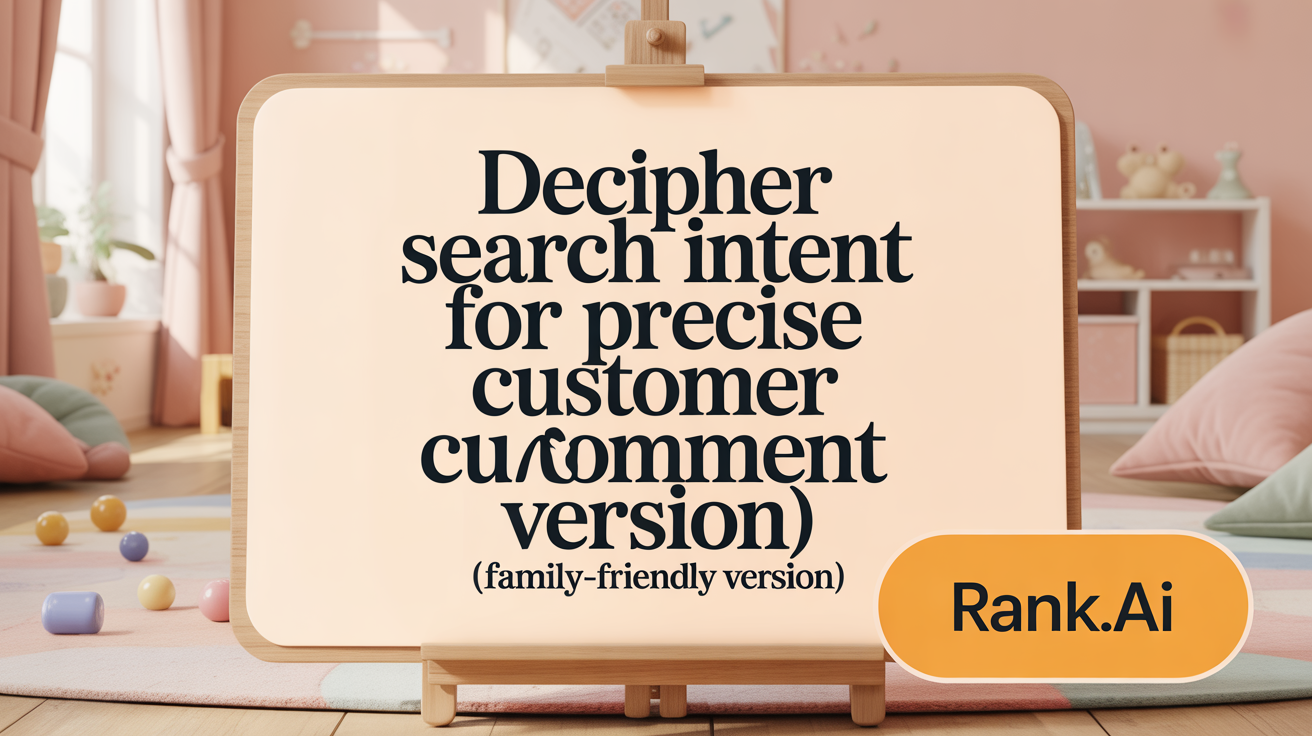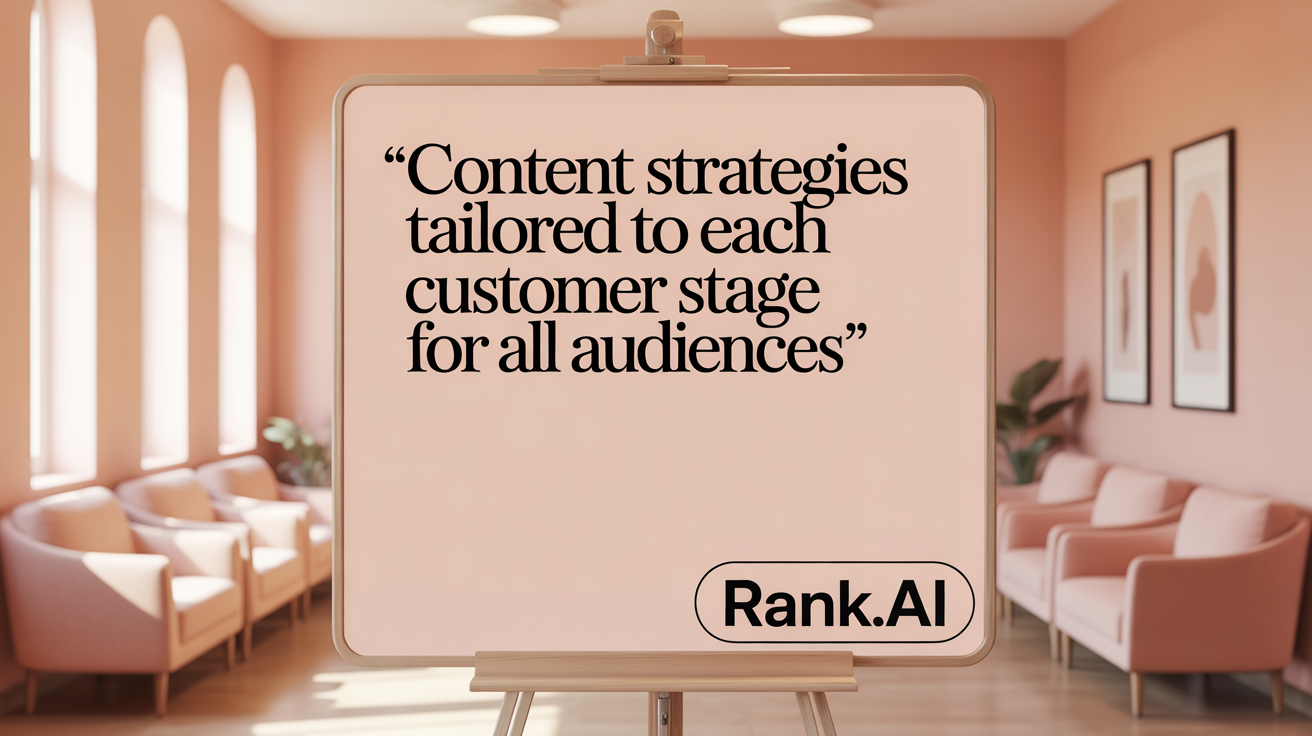Understanding Keyword Mapping and the Buyer Journey
To effectively capture and convert prospects, marketers must deeply understand how to map keywords to the various stages of the buyer journey. This article explores the critical relationship between user intent, content marketing strategies, and keyword alignment to optimize SEO performance and increase conversion rates throughout the awareness, consideration, and decision phases.
Demystifying the Buyer's Journey: What Are Its Stages?
What are the stages of a buyer's journey?
The buyer's journey represents the process a potential customer follows from first becoming aware of a problem to making a purchase and beyond. It typically includes several distinct phases that help marketers tailor their strategies effectively.
The journey begins with the Awareness stage. At this point, the prospect recognizes a challenge or need but is not yet exploring specific solutions. They might search for informational content using questions like
Aligning the Customer Journey with Effective Content Marketing Strategies
Understanding how content aligns with each stage of the customer journey is crucial for crafting a successful content marketing plan. Different types of content serve specific purposes, guiding prospects smoothly from initial awareness to becoming loyal advocates.
In the Awareness stage, the goal is to attract attention and educate potential customers. Content formats like blog posts, infographics, short videos, social media posts, and webinars are effective tools. These materials aim to answer common questions related to the user's problems or needs, establishing brand recognition and authority.
As prospects move into the Consideration phase, they begin evaluating various options. Content here should help prospects compare solutions, understand features, and assess benefits. Useful formats include product comparison guides, case studies, whitepapers, detailed reviews, and webinars. These help nurture consideration and build trust by providing deeper insights.
When a prospect reaches the Purchase stage, content must facilitate decision-making. Offering free demos, live product trials, consultation offers, and discounts can tip the scales towards conversion. Clear, compelling calls-to-action combined with testimonials and detailed FAQs support confident buying decisions.
Post-purchase, content focuses on Retention and Advocacy. Sending follow-up emails, sharing how-to guides, launching loyalty programs, and encouraging user-generated content foster ongoing relationships. Customer success stories and reviews help reinforce satisfaction, turning customers into brand advocates.
Below is a summary of content formats and their primary purposes across the journey:
| Customer Journey Stage | Content Formats | Purpose and Goals |
|---|---|---|
| Awareness | Blog posts, infographics, videos, social media | Generate interest, educate, build brand awareness |
| Consideration | Comparison guides, case studies, whitepapers | Help evaluate options, build trust, position solutions |
| Purchase | Demos, free trials, testimonials, discounts | Drive conversions, facilitate final decision |
| Retention | Follow-up emails, how-to guides, loyalty programs | Foster loyalty, encourage repeat business |
| Advocacy | User-generated content, reviews, referral programs | Strengthen brand loyalty, turn customers into advocates |
Mapping content to each customer journey stage allows marketers to meet prospects’ needs precisely when they are most receptive. By delivering targeted, relevant content, businesses can improve engagement, boost conversions, and foster long-term relationships.
For example, leading brands like Starbucks and Amazon excel at creating tailored content experiences at each stage, helping guide customers seamlessly through their buying journey. Understanding these dynamics and planning content accordingly ensures your marketing efforts resonate and achieve desired outcomes.
In conclusion, aligning content types and purposes with each phase of the customer journey enhances user experience. It enables your business to nurture prospects effectively, improve conversion rates, and build lasting customer loyalty.
The Critical Importance of Mapping Keywords to Buyer Journey Stages
 Understanding the significance of mapping keywords to each phase of the buyer journey is essential for crafting effective content marketing strategies. This process ensures that at every stage—awareness, consideration, and decision—you deliver the right message to the right audience.
Understanding the significance of mapping keywords to each phase of the buyer journey is essential for crafting effective content marketing strategies. This process ensures that at every stage—awareness, consideration, and decision—you deliver the right message to the right audience.
When keywords are strategically aligned with buyer intent, content becomes more relevant and targeted. For instance, in the awareness stage, users typically search with informational queries like 'what is' or 'how to,' indicating they seek solutions or basic information. Content tailored to these keywords, such as blog posts, infographics, or explainer videos, can effectively attract and educate prospects.
In the consideration phase, search terms often include comparison words and reviews like 'best,' 'review,' or 'comparison.' This signals that users are evaluating options, and content such as case studies, product comparison guides, and whitepapers can help them make informed decisions.
Finally, in the decision stage, transactional keywords like 'buy,' 'discount,' or 'test' show high purchase intent. Content such as product pages, free trials, or demos should be optimized around these keywords to facilitate conversions.
The link between user intent and content relevance is the backbone of successful SEO and marketing. By analyzing search behaviors with tools like SEMrush or Google Search Console, marketers can identify which keywords align with each stage, helping to organize and target content appropriately.
Strategic keyword mapping also offers SEO benefits, including improved search engine rankings, increased website traffic, and higher conversion rates. Properly targeted keywords enhance the visibility of landing pages and ensure that users find the information they need quickly, reducing bounce rates.
Additionally, understanding user search intent informs content placement, guiding marketers to develop content hubs or clusters that crawl logically through the funnel. Regularly reviewing and updating keyword strategies keeps content aligned with evolving search trends and consumer behaviors.
In summary, mapping keywords to buyer journey stages improves marketing effectiveness by aligning content with user intent, enhancing SEO, and guiding prospects seamlessly from initial awareness to final purchase. This targeted approach results in higher engagement, increased conversions, and stronger overall marketing performance.
Frameworks and Methodologies for Effective Keyword Mapping
 Understanding how to align keywords with the buyer journey is essential for creating targeted and effective content marketing strategies. Several structured frameworks and methodologies focus on mapping keywords based on user intent and the stages of the buyer’s pathway—awareness, consideration, and decision.
Understanding how to align keywords with the buyer journey is essential for creating targeted and effective content marketing strategies. Several structured frameworks and methodologies focus on mapping keywords based on user intent and the stages of the buyer’s pathway—awareness, consideration, and decision.
A common approach begins with detailed keyword research using tools such as Google Ads Keyword Planner, SEMrush, and Google Search Console. These tools help identify keywords relevant to each buyer stage by analyzing search volume, competition, and intent. For awareness, keywords tend to be informational, such as 'what is,' 'how to,' or 'tips,' whereas consideration keywords include comparisons like 'best,' 'top,' or 'review.' Decision-stage keywords are transactional, including terms like 'buy,' 'discount,' or 'pricing.'
Once these keywords are gathered, the next step involves assigning them to specific content pages or touchpoints—this process is known as keyword mapping. The primary goal is to ensure relevance so that each piece of content addresses the right stage and intent, guiding prospects seamlessly through the funnel.
Incorporating buyer personas further enhances the accuracy of keyword mapping. Personas help tailor keyword choices based on industry, job roles, demographics, and pain points, ensuring content resonates more effectively with target audiences.
An effective framework also emphasizes ongoing analysis and refinement. Regularly reviewing search intent data, SERP features, and performance metrics allows marketers to adjust keyword assignments, avoiding issues like keyword cannibalization—where multiple pages compete for the same term—and ensuring each page targets unique, relevant keywords.
By combining user intent analysis, advanced research tools, and persona insights, marketers can develop a dynamic, responsive keyword mapping strategy. This approach not only improves SEO performance but also enhances the user experience by delivering content that meets consumer needs at every stage of their buyer's journey.
Understanding Search Intent Across Buyer Journey Stages

What are the different types of search intent?
Understanding the various search intent types is crucial for tailoring content effectively. The four main categories are informational, navigational, commercial, and transactional. Each corresponds to a specific stage in the buyer's journey, guiding how marketers develop strategies.
What keywords are typical for Awareness (informational intent)?
During the awareness stage, users are generally seeking information to understand a problem or need. Keywords here often include question words such as "what," "how," "why," "tips," or "guide." For example, searches like "what is Beyoncé's age" or "how to improve SEO" are common. Content targeting these queries includes blog posts, videos, infographics, and ebooks that educate and raise awareness.
What keywords are typical for Consideration (commercial intent)?
In the consideration stage, users compare solutions and explore options. Keywords tend to have a commercial or evaluative focus, including terms like "best," "review," "top," "comparison," or "features." Examples include "best smartphones 2024," "top CRM software," or "compare electric cars." Content for this stage features case studies, whitepapers, product reviews, and webinars to help prospects analyze options.
What keywords are typical for Decision (transactional intent)?
At the decision point, users are ready to act, using transactional keywords that demonstrate high purchase intent. Common phrases include "buy," "discount code," "price," "order," or "deal." Examples are "buy Nike running shoes," "Samsung Galaxy sale," or "book hotel in Paris." Content here includes product pages, demos, free trials, and special offers, encouraging immediate action.
Mapping these search intent types to the buyer journey allows marketers to craft content that matches user needs at each stage, improving engagement and conversions. Using keywords that align with intent ensures your content reaches the right audience with the right message at the right time.
Optimizing Content by Buyer Intent and Search Phases
Understanding how to fine-tune content according to buyer intent and the different phases of the search process is essential for effective marketing. Marketers can leverage intent data and user behavior insights to craft highly targeted and relevant content that moves prospects smoothly through the sales funnel.
By analyzing signals such as search keywords, website interactions, content engagement, and account activity, marketers gain a clearer picture of what potential customers need at each stage. For example, during the awareness phase, users primarily seek educational content with informational keywords like 'what,' 'how,' or 'tips.' In contrast, during consideration, they look for comparison guides, reviews, or solutions, while in the decision phase, transactional keywords like 'buy,' 'discount,' or 'pricing' indicate immediate purchase intent.
Tailoring content formats to these signals ensures that users receive the right message at the right time. Informational articles, blogs, infographics, and videos are suitable for awareness, helping to establish authority and trust. Comparison guides, case studies, and whitepapers are effective during consideration, aiding prospects in evaluating options. Finally, product pages, free trials, demos, or special offers convert users in the decision stage.
Incorporating Natural Language Processing (NLP) technology further refines keyword relevance by understanding the context and nuances of search queries. NLP tools analyze user language patterns to identify intent more accurately, enabling marketers to optimize content for natural language searches and conversational queries, which are increasingly common.
Personalizing messaging based on explicit signals (like user identity, past interactions, preferences) and implicit signals (such as time spent on page or content clicks) helps shorten sales cycles and heighten engagement. For instance, a returning visitor viewing product comparison pages might receive personalized recommendations or special offers aligned with their interests.
Ultimately, an integrated approach combining intent data, behavioral insights, NLP analysis, and personalized messaging ensures content remains relevant and compelling through each buyer journey stage. This strategic alignment not only boosts engagement but also increases the likelihood of conversion, driving revenue growth and fostering long-term customer relationships.
Best Practices for Integrating Keyword Research with Buyer Journey Insights
How can you tailor keywords to specific stages of the buyer journey?
Effective keyword integration begins by understanding the distinct intent at each buyer journey stage. In the awareness phase, focus on informational keywords that answer questions like "what," "why," or "how," helping prospects recognize their problems or needs. For consideration, utilize comparison and solution-oriented keywords such as "best," "review," or "features," guiding users to evaluate options. At the decision stage, prioritize transactional keywords like "buy," "discount," or "pricing" aimed at prompting purchases. Mapping these keywords to appropriate content ensures that prospects receive relevant information aligned with their current needs, facilitating a smoother progression through the funnel.
How can developing buyer personas and mapping search intent improve keyword strategies?
Creating detailed buyer personas provides insight into who your target customers are, including their pain points, goals, and behavior. Coupling this with search intent analysis helps identify what keywords prospects use at each stage. For instance, understanding that your persona searches for solutions using problem-focused terms at the start, then compares options as they move forward, allows you to tailor content effectively. Mapping search intent—whether informational, navigational, commercial, or transactional—ensures your keywords match what users are seeking, making your content more relevant and increasing the likelihood of engagement and conversions.
Why is collaboration with sales and customer service teams important?
Sales and customer service teams interact directly with your customers and have firsthand knowledge of common questions and concerns. By collaborating with these teams, you gain valuable insights into the language customers use, their objections, and decision triggers. Incorporating this knowledge into your keyword research can uncover high-intent search queries you might not identify through traditional tools alone. This alignment helps create targeted content that resonates with real customer needs, improving your chances of guiding prospects toward conversion.
How should you track keyword performance and optimize content?
Ongoing monitoring of keyword performance is crucial for an effective strategy. Use analytics tools like Google Search Console, SEMrush, or Ahrefs to track metrics such as search volume, ranking position, click-through rate, and conversion rates. Regularly analyze this data to identify which keywords are driving traffic and engagement at each stage. Based on insights, refine your content by updating existing pages, creating new content pieces, or adjusting your keyword targeting. Optimizing content to enhance relevance to user search intent ensures that your strategy remains aligned with evolving customer behaviors, ultimately leading to increased visibility, improved user experience, and higher conversion rates.
Types of Content Suited for Each Buyer Journey Stage

Top of Funnel (ToFu) content examples for Awareness stage
At the beginning of the buyer's journey, the focus is on creating awareness about a problem or a need. Content types designed for this stage are usually educational and aimed at attracting a broad audience.
Examples include blog posts, infographics, short videos, whitepapers, checklists, how-to videos, tip sheets, and webinars. These formats help explain concepts, introduce industry topics, and answer common questions, using keywords like 'what', 'how', 'where', and 'who' to match informational search intent.
Middle of Funnel (MoFu) content formats for Consideration stage
As prospects move into evaluating options, content becomes more detailed and comparative. The goal here is to nurture interest and help potential customers compare solutions.
Effective formats include product comparison guides, case studies, detailed reviews, free samples, webinars, whitepapers, and solution-based videos. Content at this stage targets keywords such as 'best', 'review', 'comparison', and 'pros and cons', aligning with users seeking specific information to narrow down choices.
Bottom of Funnel (BoFu) content designed for Decision stage
When prospects are ready to make a purchase, content shifts focus to facilitating the final decision. Content here should be action-oriented and assist in overcoming last-minute doubts.
Popular formats include free trials, live demos, consultations, promotional coupons, and product pages. The keywords associated with this stage include 'buy', 'pricing', 'discount code', and 'test', reflecting transactional intent. These contents aim to persuade and convert prospects into customers.
How content types support user intent and marketing goals
Tailoring content types to user intent at each stage of the buyer journey ensures that marketing efforts resonate with prospects’ needs. Educational content informs and raises awareness, comparison and case study content helps consider options, and purchase-oriented content boosts conversions.
Using the right content at the right time not only improves user experience but also increases the likelihood of moving prospects through the funnel. This strategic alignment supports overall marketing goals such as lead generation, sales, and customer retention, making sure that every touchpoint is purposeful and effective.
Utilizing Keyword Research Tools to Enhance Mapping Accuracy

Overview of tools like SEMrush, Ahrefs, Google Keyword Planner
Effective keyword mapping relies heavily on robust research platforms. Tools such as SEMrush, Ahrefs, and Google Keyword Planner are among the most popular options for marketers. These platforms offer comprehensive insights into search volume, keyword difficulty, competition levels, and related terms. SEMrush provides a broad analysis of keywords' competitive landscape and suggestions for expanding your list. Ahrefs excels at identifying high-value keywords and backlink opportunities, while Google Keyword Planner is a free tool that integrates seamlessly with Google Ads, offering data on search volume and cost per click.
Analyzing search volume, keyword difficulty, and competitiveness
To create an effective keyword map, understanding three key metrics is essential. Search volume indicates how many users are searching for a particular term, guiding prioritization. Keyword difficulty assesses how hard it may be to rank for a specific keyword, helping you choose achievable targets. Competitiveness reflects the level of effort required to compete with other advertisers or content creators targeting those keywords. Combining these insights allows marketers to focus on high-impact, attainable keywords that match the different stages of the buyer journey.
Expanding keyword lists with research platforms
Once initial seed keywords are identified, research tools can expand these into comprehensive lists. Platforms like Semrush's Keyword Magic Tool or Ahrefs' Keyword Explorer generate hundreds of related search terms by algorithms that analyze search patterns and user behavior. This expansion provides more options for targeting with tailored content, ensuring broader coverage of user queries across awareness, consideration, and decision stages.
Filtering keywords by buyer journey stage and intent
The final step involves filtering your expanded list based on buyer intent, which can be inferred from keywords. For example, informational keywords often include words like "what," "how," or "tips"—suitable for the awareness stage. Comparison and review keywords, such as "best," "review," or "features," fit the consideration stage. Transactional keywords like "buy," "discount," or "pricing" align with the decision stage. Using these filters in research tools helps create targeted content that guides prospects smoothly through their journey, maximizing conversions and SEO performance.
Creating and Maintaining a Dynamic Keyword Map
Building spreadsheets for keyword organization
A well-structured spreadsheet is fundamental to creating an effective keyword map. Start by listing your target keywords along with key data such as search volume, keyword difficulty, and search intent. Group related keywords by themes or topics to facilitate easier assignment to relevant pages or content clusters. Using columns for URL targets, content type, and priority levels helps keep the map actionable and easy to update.
Assigning keywords to pages and content clusters
Once your spreadsheet is populated, assign each keyword to specific website pages or content clusters based on the user’s search intent at different buyer journey stages. For example, informational keywords go to blog posts or educational resources, while transactional keywords align with product pages or landing pages. This targeted allocation ensures your content matches what users are searching for, guiding them smoothly through their customer journey.
Avoiding keyword cannibalization
Keyword cannibalization occurs when multiple pages target the same keywords, which can dilute your SEO efforts. To prevent this, carefully review your map to ensure each keyword is uniquely assigned to a specific page or content piece. Use tools like Google Search Console or Ahrefs to identify overlapping keywords and issue resolution by consolidating content or refining targeting.
Regular audits and performance monitoring
Creating a keyword map isn’t a one-time task. Regular audits help you evaluate how well your keywords are performing and whether your content is aligned with current search trends and user behavior. Monitor your rankings, organic traffic, and conversion rates, then update your map accordingly. This ongoing process helps adapt your SEO strategy to changing algorithms, industry shifts, and evolving customer needs.
More Info Search Query: how to create keyword map for buyer journey
Developing a dynamic keyword map involves continuous refinement. Regularly reviewing keyword data, analyzing content performance, and adjusting assignments keep your SEO aligned with your audience’s evolving search intent. These practices enable you to maintain a robust, targeted content strategy that effectively guides your prospects through each stage of their buying journey.
The Role of Buyer Personas in Keyword Mapping and Content Strategy
Defining buyer personas for meaningful segmentation
Creating detailed buyer personas involves researching and understanding your target audience’s demographics, needs, challenges, and behaviors. These personas serve as fictional representations of different customer segments, helping marketers tailor their content and keyword strategies.
By clearly defining who your buyers are, including their age, job roles, pain points, and motivations, you can segment your audience into meaningful groups. This targeted segmentation ensures that your content and keywords address specific interests, increasing engagement and relevance.
Aligning keyword selection with personas' challenges and demographics
Once personas are established, aligning your keywords with their specific challenges and demographic profiles is crucial. For example, younger audiences may search for quick solutions using informal queries, while professionals might prefer detailed guides or technical terms.
Using insights from each persona, marketers can choose keywords that match their search intent. This means selecting question-based keywords for awareness stages or comparison terms for consideration stages, all tailored to the persona’s typical search behavior.
Enhancing personalization and relevance
Integrating buyer personas into your keyword mapping enhances content personalization. When keywords reflect the actual needs and language of your target personas, the content resonates more deeply.
Relevance increases user satisfaction, as prospects find information that genuinely addresses their problems. This approach boosts trust, encourages further engagement, and improves conversion rates.
Using persona insights for content ideation and optimization
Persona insights guide the creation of content topics and formats optimized for each segment. For instance, a technical buyer might prefer whitepapers and webinars, while a casual browser might engage more with infographics or quick tips.
By continuously analyzing keyword performance and aligning it with persona data, marketers can refine their content and SEO strategies. This ongoing process ensures your messaging stays relevant and impactful at each stage of the buyer's journey.
More info: For a deeper understanding of this topic, search for "buyer personas impact on keyword mapping" to find resources and case studies illustrating best practices.
Mapping Buyer Demand: Adapting Keyword Strategies to Audience Changes
Importance of continuous keyword strategy audits
Regularly reviewing and updating your keyword strategy is essential to keep pace with changing audience behaviors and market trends. Conducting audits helps identify new relevant keywords, drops in search volume, or increased competition on certain terms. This ongoing process ensures that your content remains aligned with what your target audience is actively searching for, enabling better visibility and engagement.
Monitoring metrics like search volume, CPC, and competition
Key metrics such as search volume, cost-per-click (CPC), and keyword competition provide insight into the value and difficulty of targeting specific keywords. High search volume indicates strong interest, while CPC reflects the commercial competitiveness of a term. Analyzing these metrics can help prioritize keywords that are most likely to generate qualified traffic and conversions, optimizing marketing efforts.
Adapting keyword targeting to evolving trends and user behavior
User interests and behaviors are constantly shifting, influenced by seasons, technological developments, and cultural changes. Adapting your keyword focus to these evolving trends ensures your content remains relevant and engaging. For example, trending topics or new product launches can create new search intent, prompting a need to update existing content or target new keywords to capture emerging opportunities.
Importance of staying aligned with search intent shifts
Search intent—what users want to accomplish with their search—also evolves over time. Staying attuned to these shifts allows you to deliver content that precisely matches current user expectations. By regularly analyzing how keywords' search intent changes, you can refine your content strategy to better guide prospects through each stage of the buyer journey, enhancing engagement and increasing conversions.
Effective keyword strategy adaptation involves a cycle of ongoing research, analysis, and adjustment. Utilizing tools like Google Trends, SEMrush, or Ahrefs helps detect trends early. Regularly updating your keyword map ensures your content remains targeted, relevant, and capable of meeting your audience’s evolving needs, ultimately supporting sustained business growth.
How Keyword Mapping Enhances the Overall Marketing and User Experience
How Keyword Mapping Enhances the Overall Marketing and User Experience
Effective keyword mapping is an essential strategy for optimizing both your content marketing and user experience. By aligning specific search terms with the appropriate stages of the buyer’s journey, businesses can significantly improve search visibility.
When keywords are carefully selected and assigned to relevant content, it ensures that your website appears in search results when potential customers are looking for exactly what you offer. This targeted approach increases the likelihood of attracting qualified visitors, boosting overall engagement.
Consistent brand messaging is achieved by using aligned keywords that reflect your messaging at each stage of the customer journey. For instance, informational keywords help in building awareness, while transactional keywords guide users toward making a purchase. This synchronization helps reinforce your brand’s value throughout the customer’s decision process.
Targeting the right keywords at each stage of the funnel also significantly boosts conversion rates. By understanding user intent—whether they’re researching, comparing, or ready to buy—your content can be tailored precisely to meet their needs. This targeted approach minimizes friction and guides prospects smoothly from awareness to action.
Furthermore, keyword mapping offers valuable insights for future marketing efforts. Analyzing the performance of different keywords and their associated content helps identify high-performing topics and gaps in your strategy. This data-driven approach enables continuous improvement of your campaigns, ensuring they remain aligned with evolving customer needs and search behaviors.
In summary, thorough keyword mapping not only enhances your visibility in search engines but also creates a seamless, relevant experience for users. It supports consistent messaging, improves engagement, and drives conversions, making it a vital component of successful digital marketing.
Bringing It All Together: The Power of Strategic Keyword Mapping
Mapping keywords to the buyer journey is fundamental for creating relevant, impactful content that resonates with prospects at every stage. By understanding the buyer’s path—from Awareness through Decision and beyond—and tailoring keywords based on search intent, marketers can enhance SEO performance, improve user experience, and ultimately drive higher conversions. Employing robust methodologies, leveraging keyword research tools, and continuously adapting strategies ensure that content remains aligned with evolving audience needs. When done right, keyword mapping not only boosts marketing effectiveness but also creates personalized customer journeys that build trust and loyalty over time.
References
- Level Up Your Content Marketing Funnel — Here's How I Make the ...
- Map Your Keywords to the Buyer's Journey and User Intent - Moz
- How to Use Keyword Mapping for the Buyer's Journey - Drip
- The Buyer Journey Map: How to Chart Your Customers' Course
- Optimizing the Buyer's Journey - Qualtrics
- How to use buyer journey keyword research to unlock SEO ...
- Ecommerce Keyword Research: Mapping Buyer Demand - SeoProfy
- The Customer Journey: Stages, Mapping, and Examples - Semrush



